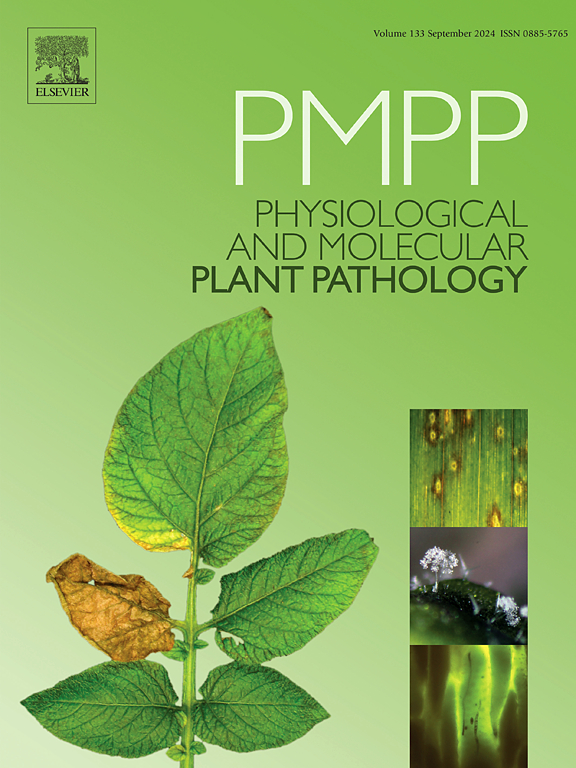Use of plant extracts for controlling Penicillium expansum-induced decay in apples
IF 2.8
3区 农林科学
Q2 PLANT SCIENCES
引用次数: 0
Abstract
The apple tree, belonging to the Rosaceae family and producing pome fruits, holds global economic importance. Nevertheless, apples face significant challenges regarding post-harvest diseases, particularly blue mold caused by Penicillium expansum. During the post-harvest period, synthetic fungicides are conventionally adopted for control, however, their disadvantages require exploration of eco-friendly alternatives. Among these, the use of plant-based products like plant extracts and essential oils constitutes an efficient eco-friendly alternative in recent years. Several researchers tested plants bioactive molecules and their activity against blue mold in apple trees. The aim of this review is to compile and analyze the research in the literature on the antifungal activity of essential oils (EOs) and plant extracts against P. expansum, responsible for blue mold in apples. Their mechanism of action is also discussed. These mechanisms include disruption of the fungal cell membrane via lipid peroxidation, increased cellular permeability, inhibition of conidial germination, interaction with membrane proteins leading to protein precipitation, and ultimately cell leakage and fungal death. Moreover, challenges associated to their stability and practical applications are addressed. Besides, future perspectives are presented. Overall, these products are highlighted as effective alternatives to chemical fungicides for the control of P. expansum.
植物提取物防治苹果青霉腐烂的研究
苹果树属于蔷薇科,出产梨果,在全球经济中占有重要地位。然而,苹果在收获后病害方面面临着重大挑战,特别是由扩张青霉引起的蓝霉病。在收获后,通常采用合成杀菌剂进行控制,然而,它们的缺点需要探索环保替代品。其中,近年来,植物提取物和精油等植物性产品的使用构成了一种高效的环保替代品。几位研究人员测试了植物生物活性分子及其在苹果树上抗蓝霉的活性。本文对近年来国内外有关精油和植物提取物对苹果蓝霉病菌的抑菌活性研究进行了综述和分析。并讨论了它们的作用机理。这些机制包括通过脂质过氧化破坏真菌细胞膜,增加细胞通透性,抑制分生孢子萌发,与膜蛋白相互作用导致蛋白质沉淀,最终导致细胞渗漏和真菌死亡。此外,还解决了与它们的稳定性和实际应用有关的挑战。并对未来进行了展望。总的来说,这些产品被认为是化学杀菌剂的有效替代品。
本文章由计算机程序翻译,如有差异,请以英文原文为准。
求助全文
约1分钟内获得全文
求助全文
来源期刊
CiteScore
4.30
自引率
7.40%
发文量
130
审稿时长
38 days
期刊介绍:
Physiological and Molecular Plant Pathology provides an International forum for original research papers, reviews, and commentaries on all aspects of the molecular biology, biochemistry, physiology, histology and cytology, genetics and evolution of plant-microbe interactions.
Papers on all kinds of infective pathogen, including viruses, prokaryotes, fungi, and nematodes, as well as mutualistic organisms such as Rhizobium and mycorrhyzal fungi, are acceptable as long as they have a bearing on the interaction between pathogen and plant.

 求助内容:
求助内容: 应助结果提醒方式:
应助结果提醒方式:


